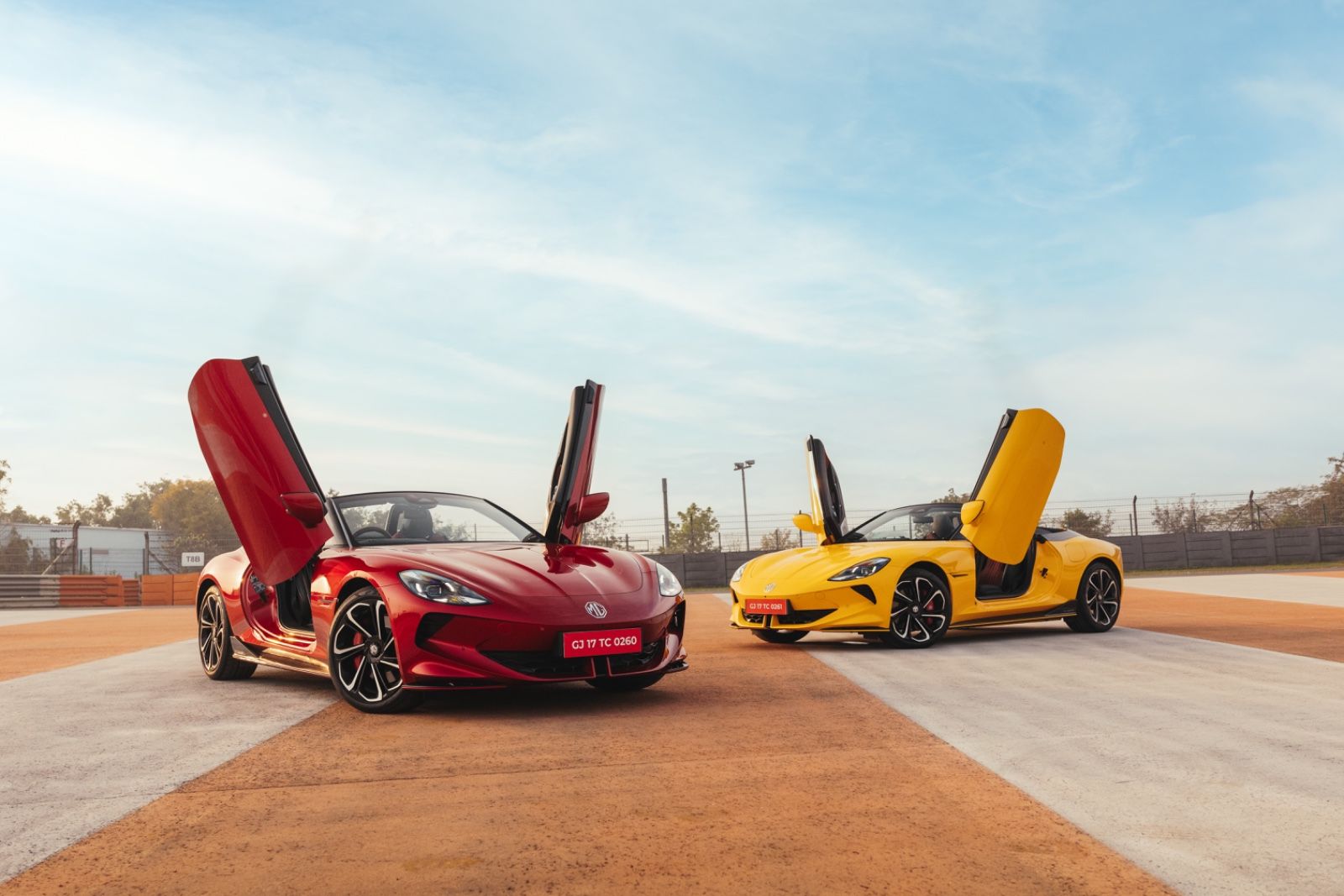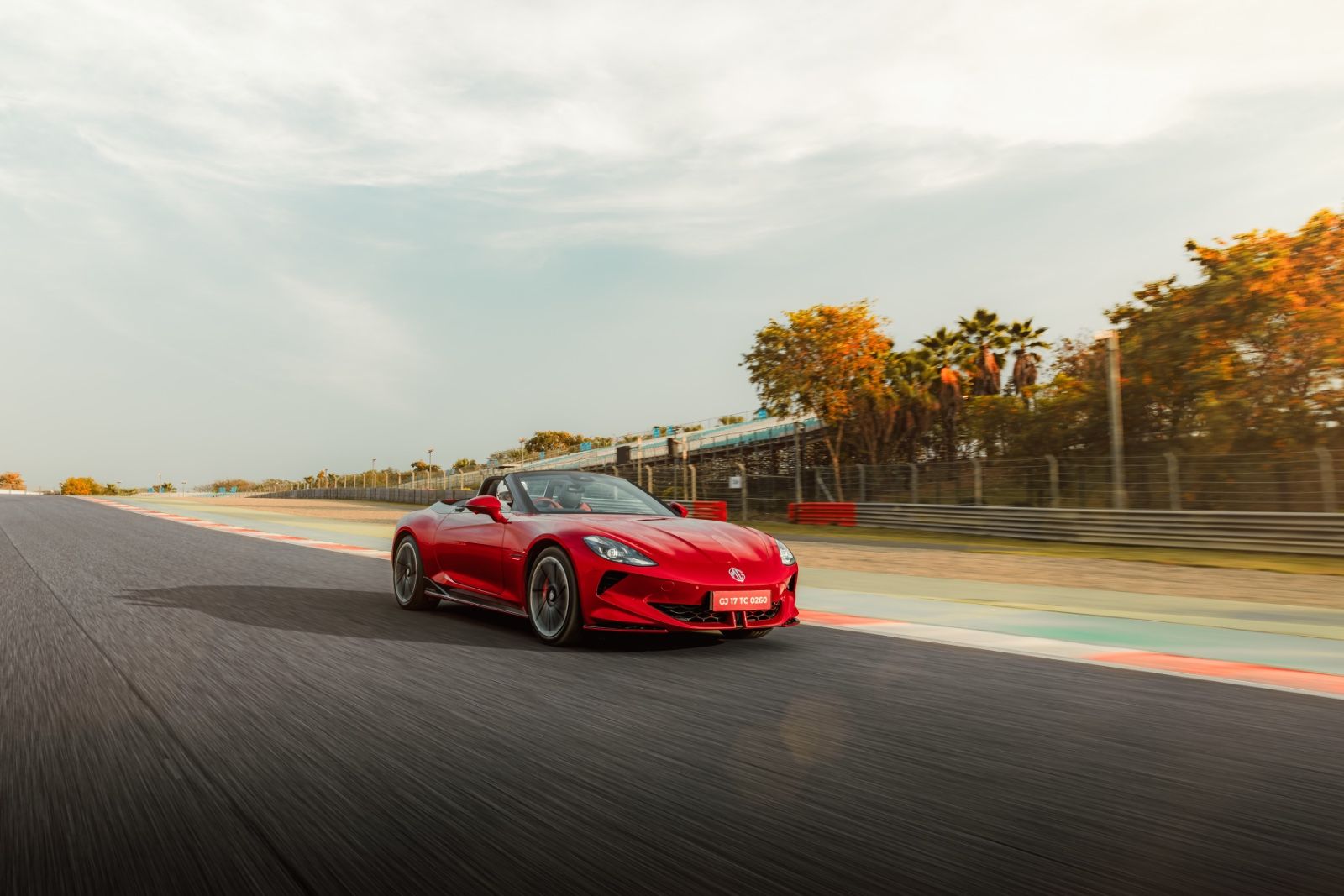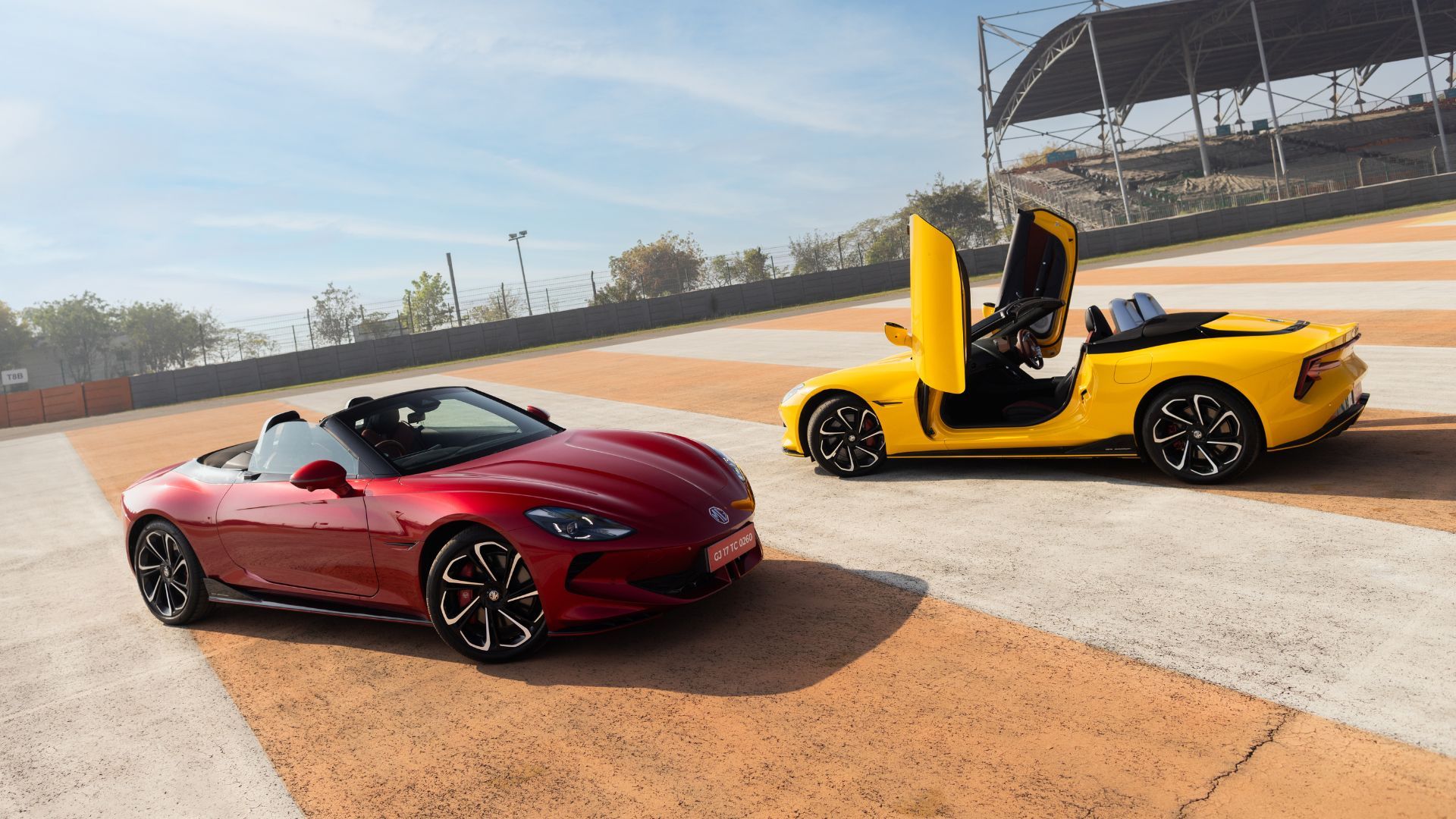On the eve of my scheduled drive at the Buddh International Circuit, I found myself immersed in that familiar buzz of anticipation. The MG Cyberster, a sleek electric roadster, presented a serious case for disruption. At Rs 74.99 lakh (ex-showroom), not only is it India’s most affordable two-seat sportscar, but after a course of slaloms, auto-cross and hot laps at the Buddh International Circuit, you realise there’s quiet nothing like it in the market.
But dawn brought its share of hurdles—a logistical snag meant that my enthusiasm was dulled significantly before slipping into the passenger seat, next to the instructor, a touch later than I had planned. Even though I have experience of slaloms in ICE vehicles and significantly slower EVs, the lack of engine noise and deflated enthusiasm had completely eliminated expectations from the equation. And while I was still shaking off the morning’s fatigue, with a sudden lurch and a deft flick of the wheel, everything changed. My sunglasses catapulted off my head, and I found myself gripping the grab handles with a mix of exhilaration and disbelief. Needless to stay I was wide awake.
Head Turner
The Cyberster is MG’s statement piece: an electric two-seater convertible sports car that aims to make high-performance electric driving accessible. A head-turner in every sense, the Cyberster’s sculpted silhouette, combined with those striking scissor doors farms enough aura for anywhere between Monaco and Mumbai. The convertible roof adds an extra layer of thrill.
The scissor doors? They're Instagram gold, no question. But in the real world—especially in tight Mumbai parking lots—they’re more awkward than awe-inspiring. You’ll need both confidence and clearance to exit gracefully. But then the Cyberster is about panache rather than practicality.

At Rs 74.99 lakh, it’s positioned as India’s most affordable two-seater sports car. But affordability doesn’t mean compromise. Underneath its sculpted exterior, the Cyberster delivers some incredible numbers: a 0 to 100 km/h sprint in just 3.2 seconds, thanks to its potent AWD dual-electric motor setup which is good for 510PS of power and 725 Nm of torque. With a 77 kWh battery, it offers an impressive claimed range of about 580km on a full charge. It supports 150 kW DC fast charging, juicing up from 10 to 80 percent in under 40 minutes, and a full charge via an 11kW AC wall box takes around 10 hours.
And then you have Formula 1 credentials endowed by former Scuderia Ferrari engineer Marco Fainello. He had been part of Michael Schumacher’s legendary run of eight titles in the championship, and has tuned the chassis of the Cyberster.
Stepping inside the MG Cyberster, you’re greeted by an interior that strikes a balance between cutting-edge tech and tactile comfort. In an age where many cabins lean heavily on touchscreens, the Cyberster’s cockpit feels refreshingly driver-centric. There are enough physical switches to offer intuitive control, while still incorporating sleek digital displays that provide all the information you need at a glance. And while the button-to-screen ratio is a delight, the touchscreens themselves are also crisp and snappy. The seats, draped in premium materials, hug you in a way that’s both sporty and comfortable.
On The Track
On track, the Cyberster isn't just about numbers on a spec sheet. It feels especially forgiving in high-speed corners, with the steering giving just the right amount of feedback, though don’t expect spades of tactile richness. The throttle is progressive, not jerky, and the brakes feel surefooted. It sits on sticky Pirelli P Zero tyres and gets ventilated disc brakes all around, which adds to the confidence. For an electric car, there’s none of the sterile detachment you sometimes expect. Instead, there's presence. Drama. And in moments—particularly through the Buddh International Circuit’s long Turn 10 or the flat-out sprint down the back straight—you forget you're driving an EV. You’re just driving.

And yet, it’s not a roadster that eggs you on like a featherweight manual classic. It’s heavier, more grand tourer than corner carver, with a bias toward comfort and stability rather than raw aggression. Which is not a flaw—just a reminder that this isn’t a spiritual successor to iconic roadsters. It’s carving its own path.
The rest of the lap went by in a blur—part thrill ride, part mental recalibration. But it also began to surface questions. For all its drama and torque, the steering felt more progressive than precise, almost too polite for a car that looks this rebellious. There’s also a curious softness to the suspension setup, which makes for great ride comfort but slightly mutes the feedback you expect on a racetrack. It’s quick, yes—but sharp? That’s more debatable.
But that’s perhaps the Cyberster’s greatest achievement. It doesn’t try to sell you on a future filled with compromise. It doesn’t lean on sustainability as a shield for mediocrity. It simply shows up, looks good doing it, and delivers a driving experience that holds its own against traditional performance icons.
Verdict
While we didn’t get to drive it outside the BIC, especially on pothole-ridden Indian roads, the Cyberster did feel tuned for comfort over outright corner carving. Which isn’t necessarily a negative. On the smoother asphalt of BIC, the composure was impressive but I’m curious how that softness translates to bumpy NCR avenues or monsoon‑warped highways.

The MG Cyberster might be an outlier in the brand’s portfolio—a halo product with little commercial expectation—but it makes a compelling case for itself. It’s bold, dramatic, and more than capable of silencing the skeptics. And in a landscape where most electric cars are still figuring out how to be exciting, that alone is pretty bold statement.






